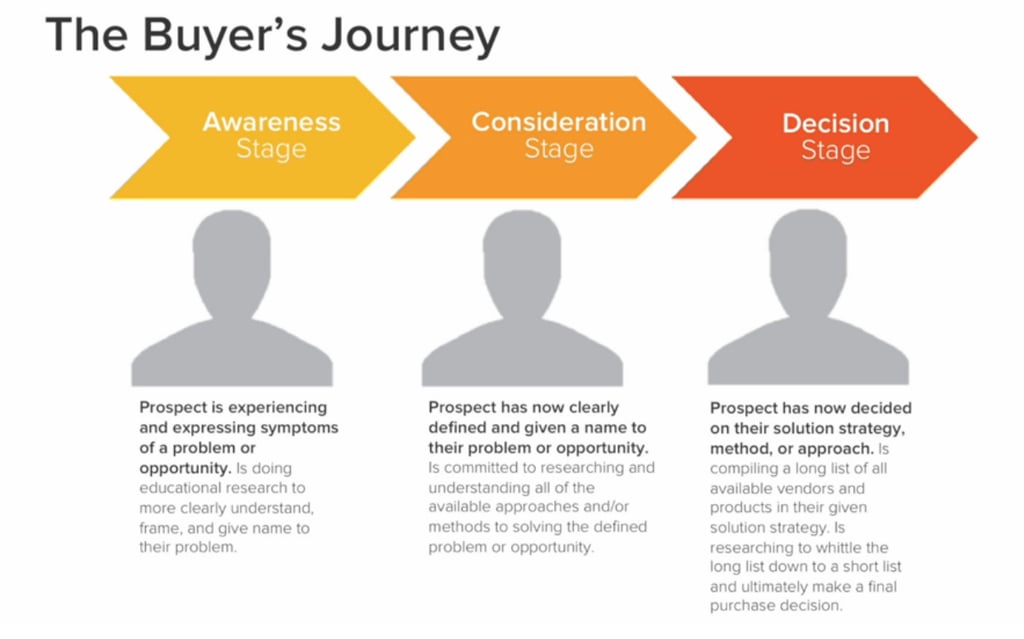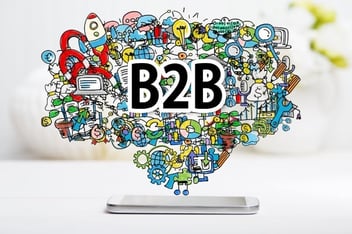What makes for successful B2B Lead Generation?
Attracting other businesses to yours isn’t as easy as picking up the phone and having a chat with their director or the business owner and sending them a PO.
Ask any salesperson, they know this only too well. Many businesses today outsource certain elements of their marketing activities; be it SEO, PPC, Social Media Management or the full end-to-end inbound methodology, and at the end of the day generating leads is usually the end goal.
Whether you decide to outsource or manage internally there are plenty of activities within each discipline mentioned above, but we've listed our top 10 recommended skills that every successful B2B Lead generation campaign absolutely needs.
Content creation
We’ve all heard that “content is king.” Cliche as it might be, the phrase couldn’t be more true. A blog is a great start, but keep in mind the three stages your leads are falling into: awareness, consideration, and decision. Being able to write content that covers each stage of your business is an essential skill to have, as it can guide leads along the buyer’s journey and eventually convert them into a customer. Writing content that supports each stage will increase the credibility of the business and your product.

The Buyer's Journey
Familiarise yourself with the buyer's journey. From stranger to brand promoter, the customer requires careful nurturing through each stage for a fully successful conversion. Your blog will form the foundations for the buyer's journey, with more interactive efforts such as call-to-actions, emails and surveys enabling you to monitor (not in a creepy way!) your customers through the conversion phase.

Creating Offers
Tap into the three stages of the buyer’s journey by creating content offers for all of them. Think of these offers as the trail of breadcrumbs, with each offer bringing the lead closer to becoming a customer. Remember that buyers are most likely to be doing research into their query before committing to a sale. This is why supporting the awareness stage with offers is crucial.
Once their research has concluded, they’re ready to move into the consideration stage, where they’ll be looking directly at the options they’ve collected in the previous stage. Finally, offers in the decision stage should focus more on you and your product. If the lead has made it this far, pushing this kind of content toward them is more acceptable than it would be when they’re barely aware of you.
Get to grips with SEO
Search Engine Optimisation has recently become a term that’s slowly seeping its way into casual conversations and for good reason; it has become a key skill to have when managing your social strategy and online visibility. There are of course several SEO tools you can use to help guide you, one of the most useful being Yoast. Yoast is a WordPress plugin that measures online visibility through several different criteria. This includes how many times you’ve used your focus keyword, your content’s word count, if any images or internal/external links were used and so on. Tools like this provide stepping stones to allow you to very easily crack into SEO, so there’s no reason to shy away!
Use Multiple Types of Offers
While blogs are great for introducing leads to your offers, the best way to nurture them is by offering a variety of content. This could include (but isn’t limited to) eBooks, white papers, YouTube videos or other rich media, presentations, research reports and live webinars. Finding multiple ways to interact with your leads will make you as a business more approachable, and they will feel more comfortable becoming your customer.
Keyword Research
If you’re aiming to hit the three stages of the buyer’s journey, you’re going to need a set of focus keywords. These will determine what users need to type into a search engine to find your content. Start by brainstorming keywords that relate to your business, then sort them by which stage they would best be assigned to. In the awareness stage, the user is searching for a solution to the problem. This is where you should use focus keywords involving the answer to a query. A good place to start could be a common issue faced by businesses. If you’re a software company, for example, this could be IT related issues that have less than straightforward solutions.
Advertising and PPC
If you feel you’re not getting much out of your own personal engagement, then there’s always the more, shall we say, premium method. Facebook’s social advertising, namely the ability to “boost” your posts, is a great way to significantly increase visibility, albeit temporarily. Alternatively, Google Adwords will display your offer on relevant searches. Adwords might be the right choice for you if you’re looking to pluck leads directly from the search engine, free from the distractions of Facebook.
Google's AdSense is another possible option. This is a service that advertises on sidebars and social media feeds, but they're aimed more directly at your target audience.
Operating on a “Pay-Per-Click” basis, depending on which tier of advertising you opt for, your post will be granted a certain number of clicks before the boost expires. Doing this regularly can go a long way to increasing your exposure, but make sure your advertising is within budget and when your advertising finishes, spend time assessing the results. You don’t want to keep spending money without analysing your ROI!

On the Topic of Criticism
Not everyone is going to agree with the opinions in your content, but there are ways of dealing with criticism sensibly. As it will be a defining obstacle to your lead generation campaigns, it’s important to keep a cool head when addressing your critics. Unless the person is being abusive, it’s always best to address them directly rather than ignore or block them, this can only make matters worse. On the other side of the coin, be careful of what you say, as this could affect the message you intend to send to potential clients.
Understanding ROI
That’s Return On Investment, and your understanding of it is essential to getting the most out of your B2B Lead Generation campaign. At its most basic definition, ROI is a measure of what you gain after investing. In the case of lead generation, your return takes a bit of a journey at first.
Beginning as web traffic, a portion of this will click through to your content or website, and a margin of those will become potential customers, finally making the leap to actual customers.
Last year, HubSpot reported that no matter the amount of traffic you get, you’ll see a return on investment once your strategy is in place. For example, if your starting visitors range from 1 to 499, you’ll likely see (on average) 4.08 times more traffic after just one year.
Revise and Reflect
Please note that B2B Lead Generation isn't basic or straightforward, but the rewards are there if our tips are kept close to heart. Perhaps most importantly of all is to reflect on your campaigns; see which elements worked, and which did not work as well as you’d have hoped. Analyse each step of the buyer’s journey, including the keywords you used for each stage. Did they attract a decent number of visitors? Was the search volume and competition on the keyword worth it? Which elements do you think need tweaking or outright changing? If there are any campaigns that proved successful, then repeat or continue them, potentially exploring new avenues along the way.
We would like to close by wishing you the best of luck with your B2B Lead Generation campaigns! It can be a long, daunting process but the rewards are there for the taking if our tips are kept close to heart. Be sure to check out our content and blogs elsewhere on the site for more insight into successful campaigns and efficient social media management.





